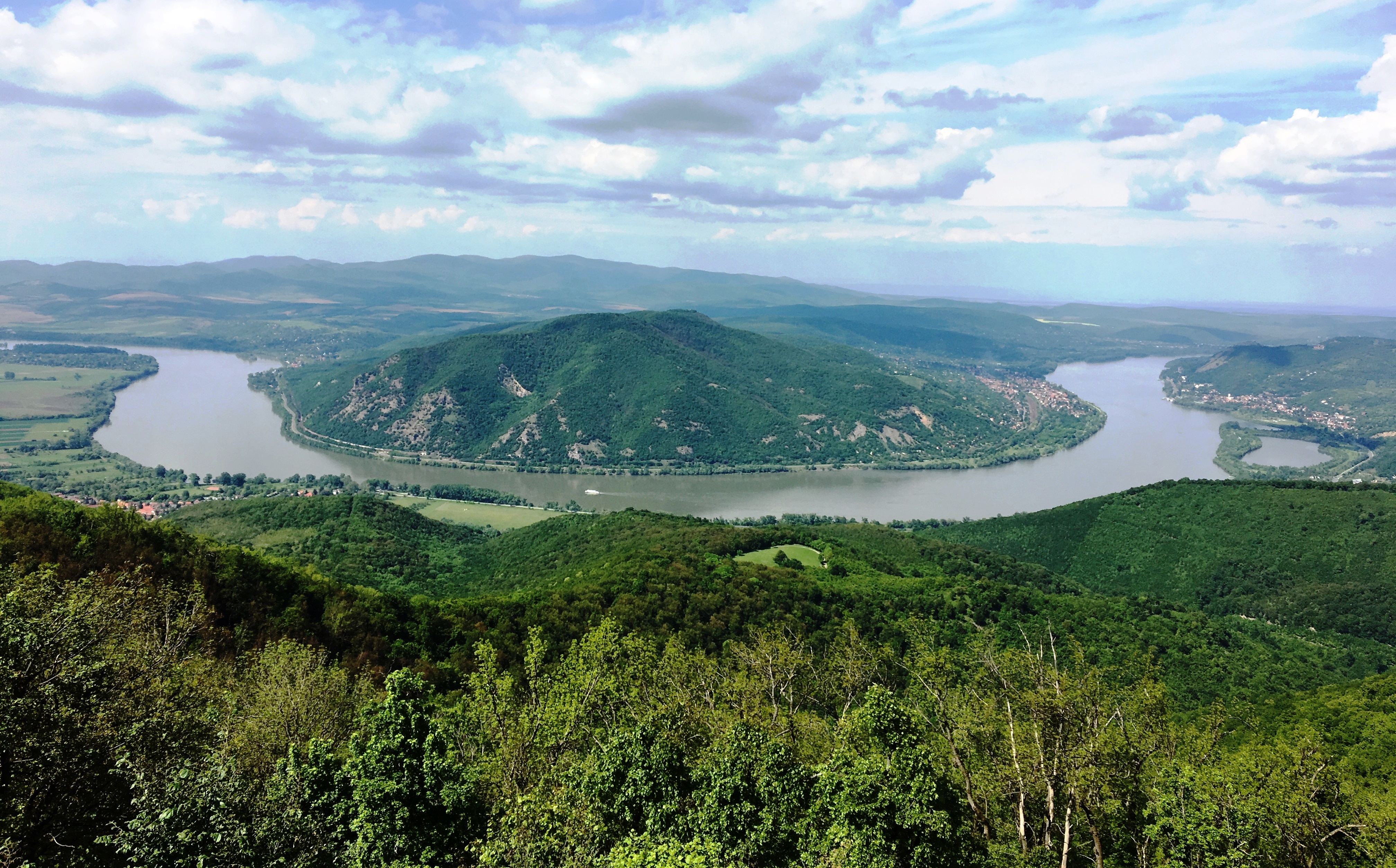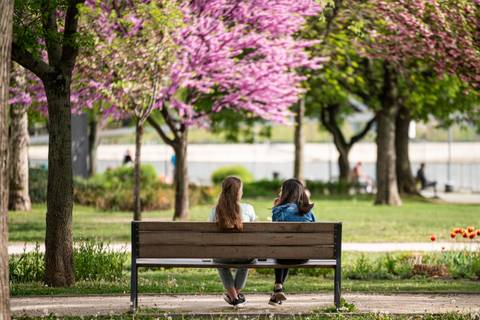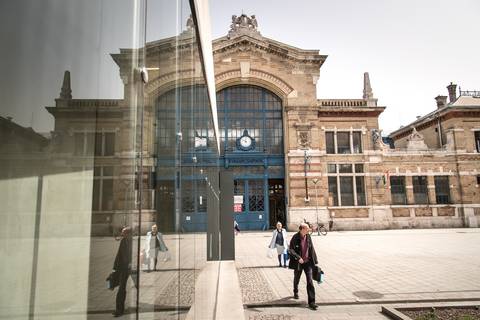We are standing atop Prédikálószék, one of the highest peaks of the historic Visegrád Hills, found about 42 kilometers upriver from Budapest. Looking down we see towering trees dressed in all shades of green, embraced by the dazzling sight of the curving Danube that shines in a silver line, while the sky above is beautifully blue and dotted with a few softly sweeping patches of white clouds. The air is crystal clear, and for about half an hour we have this picturesque place all to ourselves, soaking in this spectacular sight. Come with us on an adventurous hike to learn how we ended up here.
Towards the end of 2016, a 12-meter-tall brand-new lookout tower was erected atop Prédikálószék, one of the highest peaks of the historic Visegrád Hills, providing a breathtakingly picturesque panorama over the Danube Bend. As it is accessible by a moderate hike that takes approximately 2.5-3 hours, we thought we’d embark on an exciting self-guided trip to check it out, and it even almost entirely went according to plan.
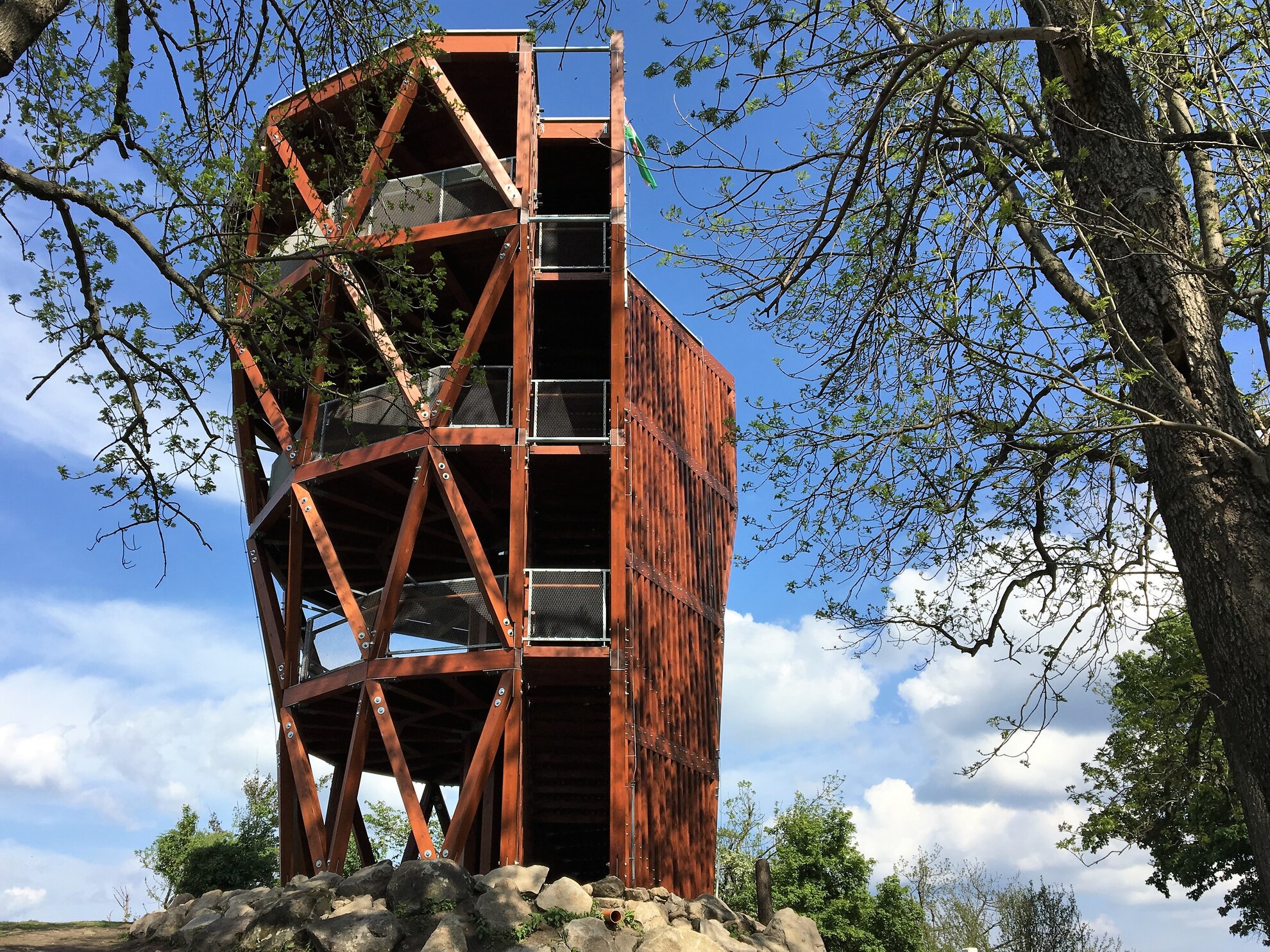
Prédikálószék lies closest to a Hungarian village called Dömös, found approximately 42 kilometers away from Budapest. Buses from Budapest to Dömös run frequently every day, leaving from the “Újpest Városkapu” station, which is easily accessible from metro line 3 (get off one stop before the final “Újpest Központ” station in northern Pest). Trains also seem to go to Dömös from the Nyugati Railway Station, however, be aware that they only stop across the Danube from Dömös, and the ferryboat only rarely runs between the two sides, so if you take the train you might actually have to hitchhike to the nearest ferryboat crossing like we did… Minor mistake… So, let’s stick with the bus for now. Tickets can be bought upon boarding, for approximately 900 forints each. The trip takes about 1.5 hours, and the best station to get off at is “Dömös Posta”, in front of an enticing souvenir shop decorated with Marilyn Monroe’s skeleton version for some strange reason. Crossing the road, our hike starts from the small street going uphill by the side of the church.
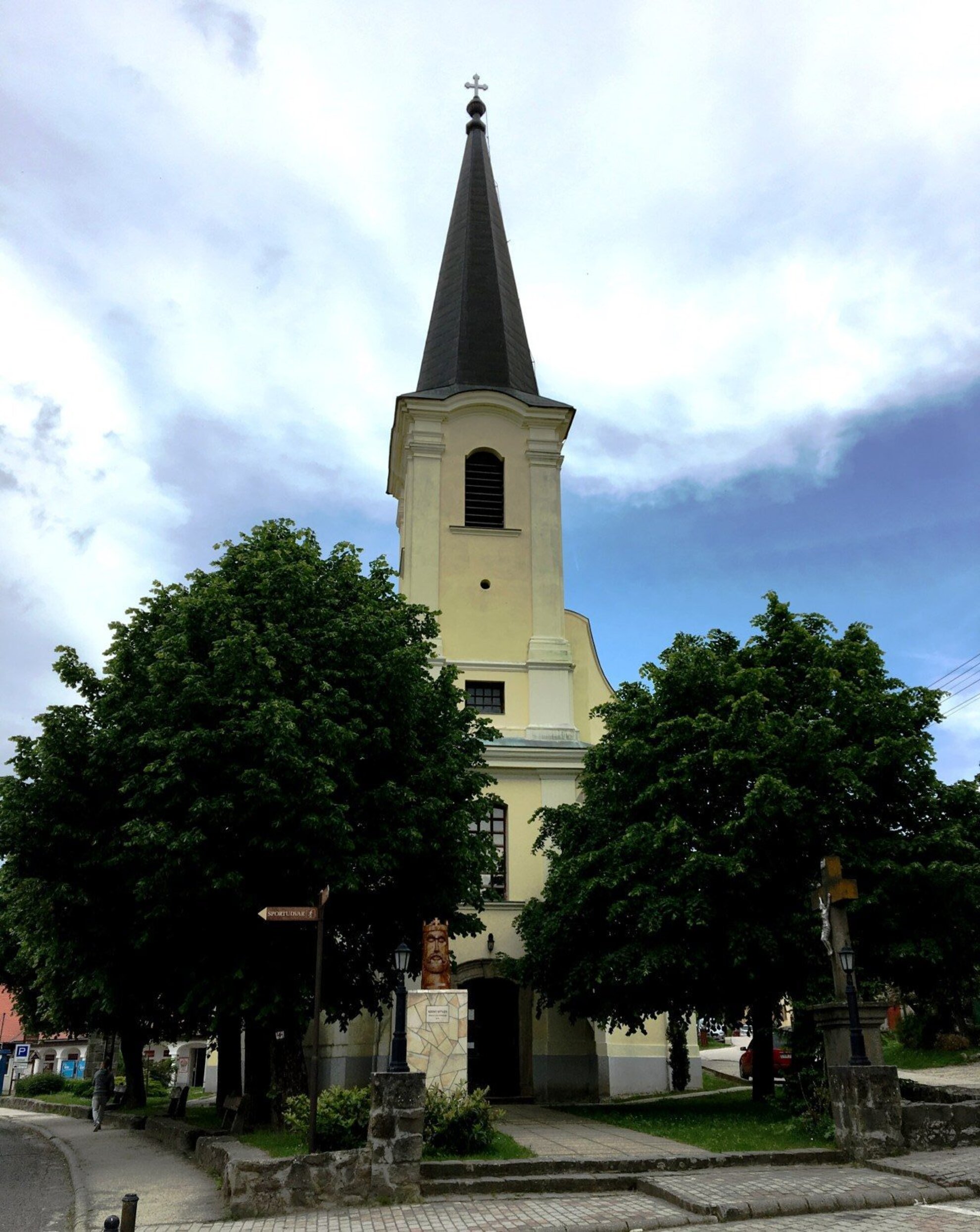
To get out of the village, we follow the curving concrete road, and the signs that guide us towards an area lined with trees, until we finally reach a small stream after about five minutes. This is where the real hike starts, becoming a lot more pleasant amid the breathtaking beauty of nature, chirping birds, and the soothing shade of towering trees that provide shelter from the strong rays of sunshine. Reaching the forest, we have to follow the red, yellow, and green signs that for a while all run together.

Soon we reach a small clearing that is home to a tiny chapel, called “Szentfa Chapel”, and a spring with cold and healing drinking water. This is a perfect place to gather some energy for the hike; there are benches scattered around, and spots suitable for a small bonfire. However, it is best to push on before long, as this is really only the beginning of the trail. After the clearing we continue our way on the path, following the red triangle markings from now on that take us uphill for awhile, on a slightly steep slope. The peak is another 2.3 km away from here.

We embarked on this hike on a Monday, hence we were pretty much the only ones on the path. We could stay quiet enough to even see a few woodpeckers working really hard, shy lizards darting to seek shelter, mice, and colorful insects. However, the trail is a lot more crowded on the weekends. During our hike, we met a super-powered hiker whose aim was to climb up and down ten (!) times in the course of one day, so even though at this point we already said goodbye to the thought of having any more pizzas ever again in our lives, this admirable effort inspired us to regain our strength.

The hardest part of the hike was ahead of us now, as the hillside gets significantly steeper, and we also have to work our way through a crumbling rocky slope that makes finding firm footing quite difficult, thus, it is definitely recommended to pay careful attention here, as the small rocks easily get loose underneath our feet, which can result in possibly nasty and serious accidents; there have been several hikers in the past who had to be rescued from this point. However, after making it through this segment – now slightly struggling – we arrive at the so-called Vadalló-kövek (translating to “Vadalló Stones”), which are said to have been formed several million years ago as a consequence of a volcanic eruption.
These towering andesite rocks look truly wonderful. Over the eons they have formed into intriguing natural sculptures, so they were given various names by Hungarians based on their shapes. For instance, one of them resembles the profile of Attila the Hun wearing a hat. It is worthwhile to take a break here to admire these fantastic natural formations, and to catch a glimpse of the Danube and Dobogókő, the highest peak of the Visegrád Hills – and also to catch your breath – however, please make sure not to climb on these intriguing rocks, as they are constantly forming, which results in lots of chipping, and while from one side they seem safe, the other side is frighteningly steep.

Leaving the Vadalló Stones behind, the peak is another half hour of sweet strolling away; here, the path gets slightly narrower, and the wilderness below is painted entirely green by a sea of nettles. The lookout tower only becomes visible towards the very end of the trip. Atop the hill, the breathtaking view makes us instantly forget about our aching muscles. The three-story lookout tower stands in the middle of the clearing, so that the entire Danube Bend is visible from the top. Furthermore, the railings of the tower are enhanced with plaques telling us about the history of Dömös, Béla IV, the legend of King St. László, and maps that depict all the peaks and towns that are visible from here. The truly modern characteristics of the lookout tower are the free Wi-Fi access, and a webcamera providing live footage from the top of the tower.
After letting our eyes wander, we can continue uphill to Dobogókő, but this time we head back the way we came, with many unforgettable memories and a sweetly satisfied feeling in our hearts – especially having regained the abandoned thought of that pizza.
